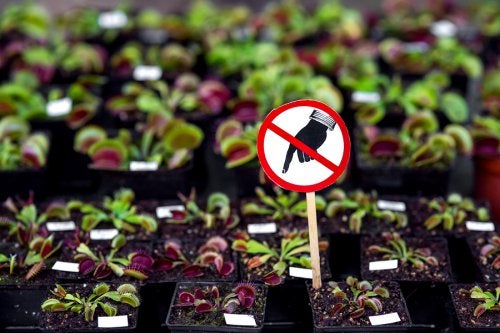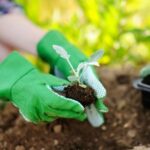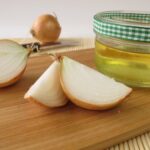Sometimes beauty has its dangers, and this is not the least with plants, so it is good to know them to avoid unnecessary risks.
Plants add a special touch to home decoration. They create a natural environment, purify the air, and help bring spaces to life. However, there are some dangerous plants that can be toxic, especially to children and pets.

In general, the labels that accompany plants give recommendations on how to grow them, but do not warn of the damage they can cause. Who buys them never assumes, therefore, that they can be dangerous plants.
It is also possible that on a walk in the countryside you discover a plant of great beauty and you are encouraged to take it home without knowing if it represents any danger. But sometimes, its beauty is precisely a trap that can cause a lot of problems.
Dangerous plants that you should not have in your home.
1. Hydrangeas.
It is perhaps one of the most popular plants for home decoration. Its bright blue flowers are very showy, however, they are its most dangerous part.
Chewing the hydrangea flower can cause respiratory arrest, lower blood pressure and there is a high risk of dizziness and fainting. The leaves and the stem also produce these effects but on a smaller scale.
These symptoms are produced by hydrazine, a cyanide family compound that is present in this plant, so beautiful and common in our homes.
2. The lilies.
Lilies, also known as lilies, are one of the favorite flowers in bouquets and in decorative pots. However, those who have cats should avoid them.
There are many different types of lilies and they all have negative effects on cats. Some irritate the digestive tract of felines and cause diarrhea and vomiting. Other types of lily affect the kidneys and can cause death.
The studies have failed to find out what the substance causes poisoning in cats, but if you have determined that only two petals can be fatal.
3. Salvia divinorum.
This type of sage may take many unsuspecting by surprise as it is often confused with common sage, which is edible and has many health benefits.
The Salvia divinorum has hallucinogenic compound like LSD. Although the indigenous people of the Amazon use it for ritual purposes, its consumption can cause irreversible damage, as it creates states of altered consciousness and hallucinations that sometimes become recurrent and permanent.
For that reason, when you see the label that says “salvia”, make sure it does not have the surname divinorum.
4. Floripondio, Angel’s trumpets or bells: Dangerous plants.
This plant, known by different names depending on the region, is a leafy and highly decorative tree. It’s very attractive flowers hang down like a skirt or bell. For added temptation, its flavor is sweet and pleasant.
However, the floripondium is also a hallucinogenic plant. Its flowers cause psychotic episodes, alienations, paralysis and can be fatal. This is because it has tropan alkaloids, substances that are also present in synthetic drugs and that inhibit the nervous system.
5. The trinitaria.
It is very common in the exterior of the house, since it climbs the walls and gives them color with its flowers.
The flowers, stem and seeds of the trinitaria contain cyanogenics and oleandrin, both toxic substances that affect the heart. If ingested intentionally or by accident, arrhythmias and tachycardias will occur within a few hours, as well as dizziness, vomiting, and diarrhea.
6. Oleander.
Also known as ‘flowering laurel’, oleander has small, delicate flowers, which is why it is a favorite plant both indoors and outdoors. However, it is a dangerous plant for people and animals.
Oleander contains glycosides that, when eaten, speed up the heart rate, cause sweating, nausea, vomiting, diarrhea and breathing problems.
It is also dangerous in contact with the skin, as its stem has a milky substance that can be irritating. Therefore, it is recommended to wear gloves when sowing, transplanting or pruning them.
7. The Diffenbachia.
This plant, also known as ‘Lotería’ and ‘Amoena’, is very popular for its color and easy maintenance indoors and outdoors. This plant has asparagine which is an irritating substance. It can cause skin problems for some people and if chewed it can cause a sore throat and heart problems.
Dangerous plants: general recommendations.
These dangerous plants are very decorative and easy to find, so it is always advisable to handle them carefully and keep them out of the reach of pets and children.
In addition, it is good to take other precautions:
- Collect the leaves and petals that come off the plant.
- Put labels that warn of its danger.
- Wash your hands after touching the plants.
- If you have pets, make sure they have a container with fresh water to prevent them from drinking accumulated water on the plants.
And remember, when buying a new plant, look for information that can help you know if it is a dangerous plant.


